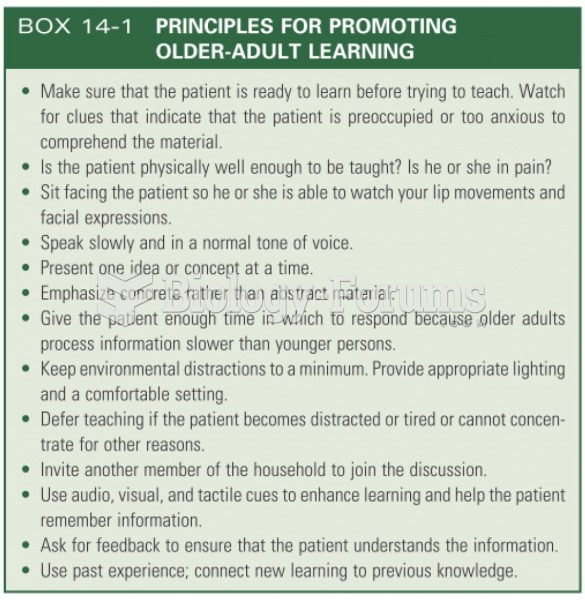Answer to Question 1
B
Answer to Question 2
Assimilation is a basic process that involves responding or interpreting new experiences in terms of existing schemes--in other words, in terms of what the child already knows. For example, an infant may respond to a washcloth using two existing schemes, grasping and sucking. The infant grabs the washcloth (an act of assimilation to the grasping scheme), stuffs a corner of it in his mouth, and sucks on it (an act of assimilation to the sucking scheme). In each case, the infant has used an existing response and incorporated the washcloth into his existing notion of scheme of graspable, suckable objects. Accommodation is a process that involves modifying existing schemes in light of new experiences. Returning to the washcloth example, the infant used an existing scheme in the process of grasping the washcloth. However, because of the unique properties of the washcloth, the response itself had to be modified (accommodated) and the child's scheme of graspable objects modified (accommodated) to include washcloths. Every adaptive act involves the complementary processes of assimilation and accommodation. Since it is questionable whether sucking on washcloths is particularly adaptive--they are sometimes soapy, etc.--accommodation in this case may involve the exclusion of washcloths from the sucking scheme and creation of a new scheme of things with which to wash the face and body (but not floors, cars, etc. unless they have become relegated to the category of rags).








